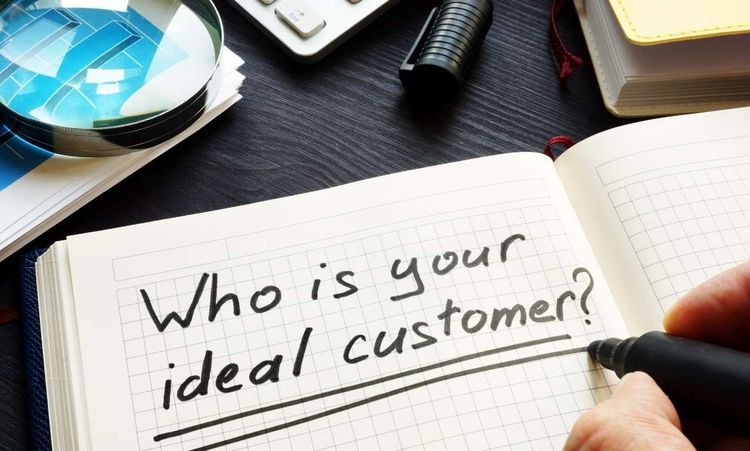Finding buyers is often the greatest challenge for startups in the manufacturing industry. As a new business, you may be wondering how to stand out and secure a steady stream of customers. The best way to find buyers as a startup manufacturing company is to combine strategic planning, digital presence, and relationship-building techniques to connect with the right audience.
Understanding Your Ideal Customer

Finding the right buyers begins with understanding who they are. As a manufacturing startup, tailoring your efforts to meet the needs of your target market ensures that your strategies are not only efficient but also highly impactful.
Defining Your Target Audience
Before engaging on how to find buyers as a startup manufacturing company, identify who they are. Think about their needs, challenges, and the solutions your products provide. A well-defined target audience simplifies your marketing efforts and ensures your outreach resonates with potential buyers.
- Industry and Niche: Determine which industries your manufacturing business serves best, such as automotive, healthcare, or consumer goods.
- Company Size: Are your products suited for small businesses, medium enterprises, or large corporations? Tailoring your pitch to the size of the company helps in personalizing your approach.
- Geographic Focus: Pinpoint regions or countries where your products would have the highest demand. For example, manufacturing businesses dealing with specific climate-related products might target regions where such items are in demand.
- Purchasing Power: Focus on companies with budgets that align with your pricing to avoid mismatched expectations.
Creating Buyer Personas
A buyer persona is a detailed representation of your ideal customer. It’s built using data and insights about your target audience. This step ensures your marketing campaigns speak directly to your prospective buyers.
Answer these questions to create accurate personas:
- What are the pain points of your prospective buyers?
- What motivates their purchasing decisions?
- Who are the decision-makers in their companies?
- What is their buying process?
These insights will help you position your products as the perfect solution, ensuring that your outreach strategies resonate with the right audience.
Building an Online Presence

Your digital footprint is a powerful tool to attract buyers. With manufacturing increasingly moving online, a strong online presence ensures visibility in a crowded market.
Developing an Informative Website
Your website is often the first touchpoint for potential customers. It acts as your virtual storefront and must clearly communicate your value proposition to help you find buyers as a startup manufacturing company.
A good website should include:
- High-quality images of your manufacturing facility, industrial products, and detailed marketing materials.
- Comprehensive landing pages for each product line, with descriptions that highlight benefits, use cases, and competitive advantages.
- A compelling About Us page that showcases your company profile, mission, and expertise in the manufacturing industry.
- Information about quality certifications, facility photos, and any unique proprietary processes that set your business apart.
Additionally, ensure that your website is mobile-friendly and optimized for fast loading times to provide a seamless user experience.
Utilizing SEO Strategies for Visibility
Search engines are where most buyers begin their search. Invest in Search Engine Optimization (SEO) to ensure your website ranks well and reaches your intended audience.
Here are some key SEO strategies to implement:
- Use relevant keywords such as manufacturing buyers, industrial products, and business for sale in your content.
- Create valuable resources like blogs, whitepapers, and case studies that answer common industry questions.
- Optimize meta descriptions, title tags, and headers with keywords like best way to find buyers as a startup manufacturing company to enhance discoverability.
- Build backlinks by partnering with industry directories or contributing guest posts to relevant platforms.
Establishing a Social Media Presence
Social media platforms are invaluable for connecting with potential customers and growing your customer base. They provide a space to showcase your brand’s personality, share updates, and engage with your audience.
Choosing the Right Platforms
Not all social platforms are equally effective for manufacturing businesses. Focus your efforts where they matter most:
- LinkedIn: A must-have for B2B networking, showcasing expertise, and engaging with decision-makers.
- Facebook: Useful for broader engagement and sharing company milestones.
- Instagram: A visual platform where you can display images of your innovative products, production process, and team activities.
Focusing on LinkedIn
Leverage LinkedIn’s potential to build a professional network:
- Share thought-leadership articles and updates about your industry.
- Join relevant industry groups to connect with qualified buyers.
- Use advanced search filters to find specific target accounts and decision-makers.
Implementing Inbound Marketing Techniques
Inbound marketing focuses on drawing potential buyers to your business through valuable and engaging content. It’s a proven method for attracting and retaining buyers in the manufacturing space.
Content Marketing Strategies
Content marketing allows you to demonstrate your expertise while building trust with your audience. Here’s how to make it work:
- Publish insightful blogs targeting types of buyers and their unique challenges.
- Share case studies that highlight how your solutions have delivered measurable results for your clients.
- Create videos or infographics to explain your manufacturing processes and the benefits of your products.
Leveraging Email Marketing
Email marketing remains one of the most effective ways to nurture leads and convert them into buyers.
To optimize your email campaigns:
- Segment your audience based on their interests, company size, or geographic location.
- Personalize emails to address specific pain points or opportunities.
- Include clear calls to action, such as requesting a demo or downloading a product catalog.
Using Blogs and Case Studies to Attract Interest
Case studies and blogs can provide real-world examples of how your products solve problems. They’re also an excellent way to build credibility and authority in your industry.
- Showcase how your products improved clients’ manufacturing capacity, reduced costs, or enhanced efficiency.
- Highlight testimonials from satisfied clients to build trust with new prospects.
Outbound Marketing Strategies
While inbound marketing is powerful, outbound strategies like direct outreach and networking can help you actively reach potential buyers.
Direct Outreach Efforts
Proactive outreach can establish a direct line of communication with qualified buyers. Strategies include:
- Cold emailing: Use personalized emails to introduce your company and explain the value you offer.
- Cold calling: Train your sales team to engage with prospects and secure meetings.
- Offering free resources: Share guides or industry reports as a way to establish credibility.
Networking at Industry Events
Attending trade shows and conferences allows you to interact with industrial buyers and other stakeholders directly.
- Bring detailed marketing materials to showcase your products and services.
- Network with Investment banks, business brokers, and other potential partners.
- Schedule follow-up meetings to nurture the connections made during these events.
Crafting a Compelling Sales Pitch
A strong sales pitch is essential for converting leads into customers. Highlight your strengths, such as:
- Your quality certifications and adherence to quality standards.
- Your ability to deliver cost-effective solutions and sustainable growth.
- Testimonials and case studies from previous buyers.
Understanding the Buying Cycle
Each buyer’s journey is unique, but understanding the industrial buying process helps you align your efforts with their expectations.
Stages of the Industrial Buying Process
- Awareness: Buyers identify a problem or need.
- Research: Buyers seek solutions and evaluate options.
- Evaluation: Buyers compare potential suppliers.
- Decision: Buyers finalize their purchase and begin onboarding.
Meeting Buyer Expectations at Each Stage
- Offer informative content during the awareness stage to educate buyers about their options.
- Provide detailed product information and answer FAQs during the research stage.
- Deliver personalized demos and highlight your value proposition during the evaluation stage.
- Ensure a seamless transition post-purchase during the decision stage.
Building Long-term Client Relationships

Securing buyers is only the beginning. Retaining them ensures sustainable growth and repeat business.
Importance of Customer Service
Exceptional customer service creates loyal buyers who are likely to recommend your business to others.
- Respond quickly to queries and complaints.
- Provide post-sale support to address any issues.
- Regularly check in with customers to strengthen relationships.
Following Up Post-sale
Stay engaged with your buyers even after the sale:
- Share updates about product enhancements or new releases.
- Collect feedback to identify areas for improvement.
- Offer loyalty programs or discounts to encourage repeat purchases.
Encouraging Referrals and Repeat Business
Word-of-mouth is a powerful marketing tool. Satisfied buyers can become advocates for your brand.
- Introduce a referral program that rewards customers for bringing in new leads.
- Maintain open communication channels to ensure repeat business.




